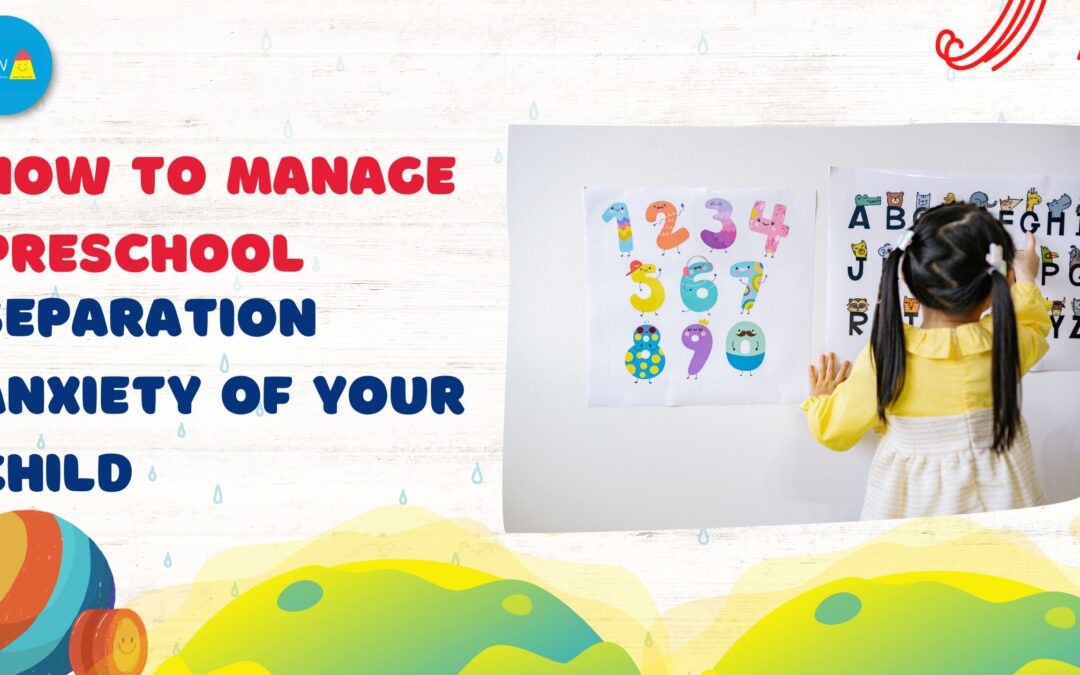You had a great visit at the preschool that you want your 2-year-old to go to. She loved the school and spoke a ton to the teacher. You had a good time shopping together and bought her a new favorite bag, a water bottle, a snack box, and snacks. You had a ton of fun choosing what she would wear to school and packed her bag together and you had a good night’s sleep thinking of bright new beginnings tomorrow.
You went to school together and kissed goodbye. And then it began! Whoa! The earth-shattering screams and gut-wrenching cries! Oh My!, What just happened to my confident Pre-schooler?
Many factors contribute to factors that could contribute to a child’s tears at school, and the most common one is separation anxiety:
Children starting school or daycare for the first time may experience separation anxiety. They may cry when their parents or caregivers leave because they feel scared or uncertain in a new environment, even though they had a good first visit to the school.
Dealing with separation anxiety at preschool can be challenging, but some strategies can help both you and your child navigate this transition. Here are some tips:
Gradual Transition
Ease your child into the preschool routine by gradually increasing the amount of time they spend away from you. Start with short separations and gradually lengthen them over time. This helps your child build trust and confidence in their ability to cope with being away from you.
Establish a consistent routine
Consistency and predictability can help reduce anxiety. Create a morning routine that includes specific rituals or activities that your child can look forward to, such as reading a book together or saying a special goodbye phrase.
Positive association with preschool
Help your child develop positive associations with preschool by talking about it positively. Share stories of fun activities, friends they can make, and exciting things they can learn. Visit the preschool with your child before they start to familiarize them with the environment.
Communicate and validate emotions
Talk to your child about their feelings of anxiety and validate their emotions. Let them know it’s okay to feel nervous and reassure them that you understand their concerns. Encourage open communication and provide a safe space for them to express their emotions.
Create a goodbye routine
Develop a consistent goodbye routine that involves a special ritual or a small comfort object, such as a hug, a special handshake, or a kiss on a specific spot. This routine can provide reassurance and signal that you will return.
Trust the teachers
Build trust in the teachers by getting to know them and communicating with them regularly. Establishing a positive relationship with the teachers can help your child feel more secure and comfortable in their absence.
Maintain a positive attitude
Children often pick up on their parent’s emotions. Stay positive and confident during drop-offs, even if your child is upset. Your calm and reassuring demeanor can help your child feel more at ease.
Follow through on promises
If you promise to return at a specific time, make sure you do so. Keeping your word reinforces trust and helps your child develop confidence in your reliability.
Stay connected
Bring a small object from home, like a family photo or a special toy or a blanket, as a source of comfort.
Seek support if needed
If your child’s separation anxiety persists or significantly impacts their well-being, consider seeking guidance from a pediatrician, counselor, or child psychologist who can provide further strategies and support.
Remember, separation anxiety is a normal and temporary phase for many children. With time, patience, and support, most children gradually adjust and become more comfortable with the preschool experience.

